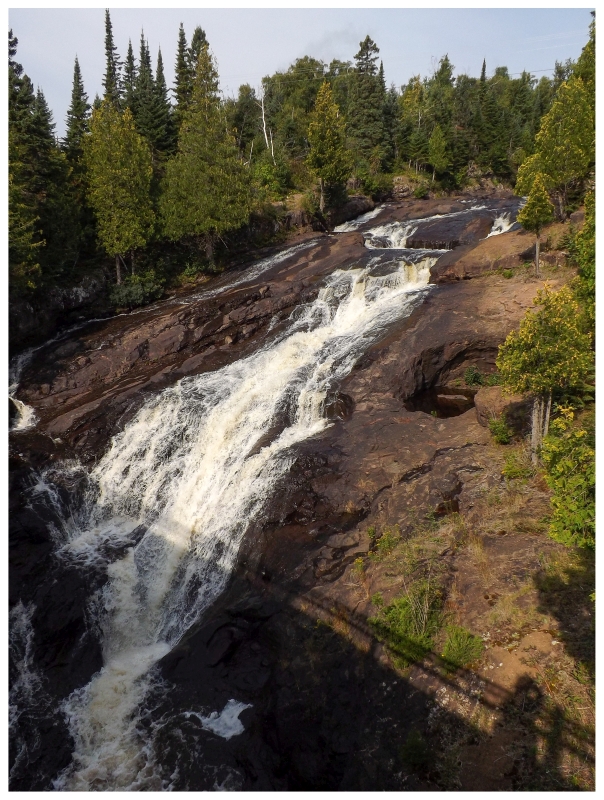
I obviously slept well following yesterday's long day. Most of the other overnight campers were already gone, as I threw my pack over my shoulder and pushed upwards towards the roadway. There wasn't a breakfast restaurant just outside the state park, but it was only a 10 minute walk to a decent spot in nearby Schroeder. As I crossed one last bridge to breakfast, I passed another spectacular waterfall known as Cross River Falls. The ruggedness and scenic beauty was really on display here on the Minnesota Highway 61 and I could see how Lake Superior's North Shore was a destination for Minnesotans. |

Following breakfast, I was picked up in record time by a guy more on my level than last night's rambler. Driver #4 stopped because of his time spent in Norway and Iceland, and the hitchhiking culture there, where we then went on to talk about life in northern places. I found his love of cold lands a bit odd, but this was still more like hanging with an old friend than awkwardly making conversation in exchange for a lift. In a recurring theme he was also headed to Duluth and while continuing the ride with him was tempting, I stuck with my dedication to see every Minnesota lighthouse*. (*We actually passed a taconite pellet factory that has a light on its roof that some people count as a lighthouse, so every Minnesota lighthouse besides that one.) The next lighthouse was also Split Rock Lighthouse, easily Minnesota's most famous and even one of the more famous lighthouses over the entire Great Lakes. A 54-ft tower set on a sharp cliff, this golden brick lighthouse was requested in 1906 after one of those famous November gales inflicted damage on 29 different ships. Back at Isle Royale, Dave told me that Split Rock's architect drew up the lighthouse's architectural plans while sitting in the lantern room of the Rock of Ages. (I was pretty excited about this when he told me, knowing I would be at Split Rock within a few days.) |
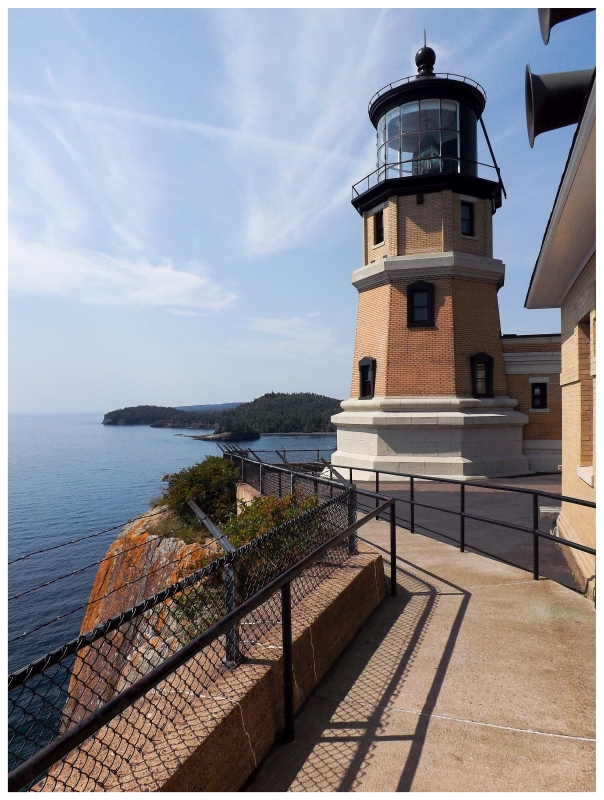
Access to Split Rock was only by water until a highway was constructed from Duluth in 1924. Following the construction of the Lake Superior International Highway, Split Rock became a destination for Minnesotans and an icon of Minnesota. Visitors numbered about 5000 in the early 1930s, but this number ballooned to 100 000 by the late 30s. This meant that when the Coast Guard took over the Lighthouse Service in 1939, that the Coast Guard advertised and heralded Split Rock as the most visited lighthouse in all of America. Today Split Rock is one of those lighthouses with a sea of parking, a visitors centre and tour busses. One of these tours was going on and while 40 people listened to a tour guide on the lawn below, I raced up the stairs to see the lighthouse before I was joined by half of Minnesota. Even trying to get this first exterior photo, I had to post up and wait about 5 minutes for the non-tour traffic to clear. This is a very popular spot. |

Walking back out to the highway, I don't really remember Driver #5. With only a 20 minute drive to the next town I didn't have very far to go, although I was still appreciative. (I think it was a middle-aged dude in a minivan if I had to guess.) (An aside: About a month after this I found myself in Ontario having lunch with Donnie & Steve at the Walker Grill. I casually mentioned something about "this one time while I was hitchhiking in Minnesota," to which Donnie asked when the hell I was hitchhiking in Minnesota..."oh, about a month ago." Haha!) In Two Harbors there was a campground on the edge of town which worked well for my love of American towns and cheap accommodations. Arriving much earlier than I expected, suddenly I had a free afternoon and there was a golf course right across the road. Lakeview National might only have 3.6 Google Stars, but they gave me a bunch of free balls, there were fairway views over Lake Superior, and the course was challenging enough. I shot a 125 and was having a pretty good day. |
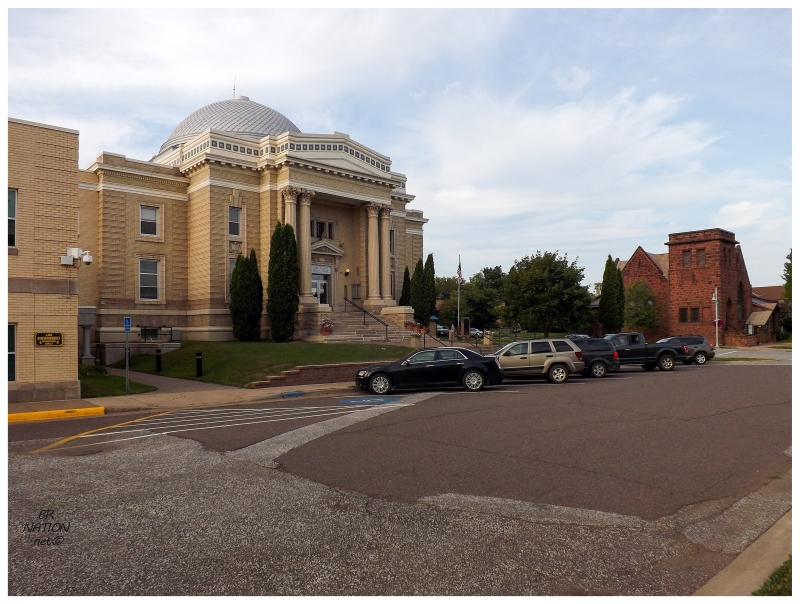
Lake County Courthouse in Two Harbors.
Walking downtown, Two Harbors was a handsome little town that was much more authentic than Grand Marais. I was really enjoying the place, even as the pub I planned on visiting was having kitchen problems. Everything would work out though as I ended up at Do North Pizzeria, which served up delicious pizza in a dark, wood-panelled interior that felt like it belonged in Minnesota. Suddenly I was so happy that the pub's kitchen was closed. |
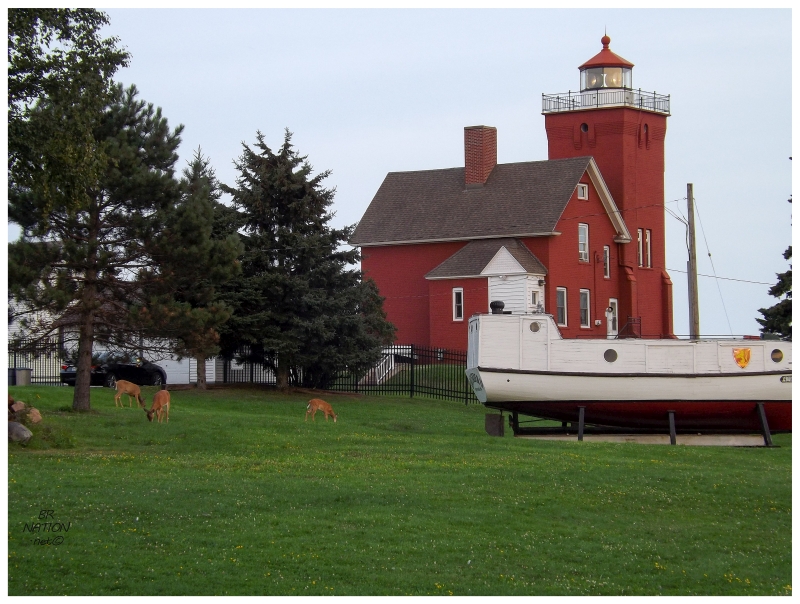
Full of pizza and maybe a few draft Leinenkugels, I sauntered through the streets of Two Harbors, across the tracks, past the train station and a large old building foundation, out to their prominent red brick lighthouse. What I didn't realize was that the Two Harbors Lighthouse was one of those ones with operating hours and closed grounds. At least here at Two Harbors the closed grounds make a bit more sense because they operate a B&B in the old lighthouse. After a certain hour, I'm sure visitors don't enjoy weirdos walking the grounds with cameras. |

Turning away from the fenced grounds, I happily went out on their breakwall at sunset to see the Two Harbors East Breakwater Lighthouse instead. Whereas Grand Marais' breakwall had a park and lots of people, Two Harbors was much more my style with just a few fisherman about. |
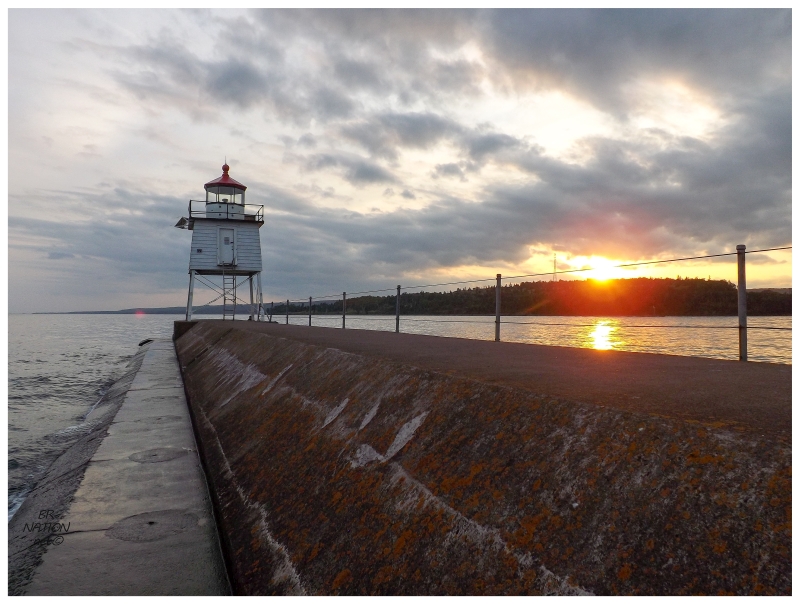
The village of Two Harbors started out with a few settlers building simple shacks and taking to cutting lumber in the nearby forest. The town would grow exponentially with the finding of an "iron mountain" in the nearby Vermillion Range, which caused the Minnesota Iron Company to form and buy almost all of the lakefront property here. The extraction of iron led to the construction of railways, townsites and ore docks - with the original wooden ore docks being replaced by the still-used steel ore docks built between 1907 and 1915. Of course with ships constantly coming and going from Two Harbors - it's apparently still a great place to watch departing and arriving lake freighters - you needed a lighthouse marking the harbour and guiding these ships. The original, red brick lighthouse was built in 1892, while a basic light was shown from the original breakwater by 1895, with the current breakwater light coming into service in 1906. |
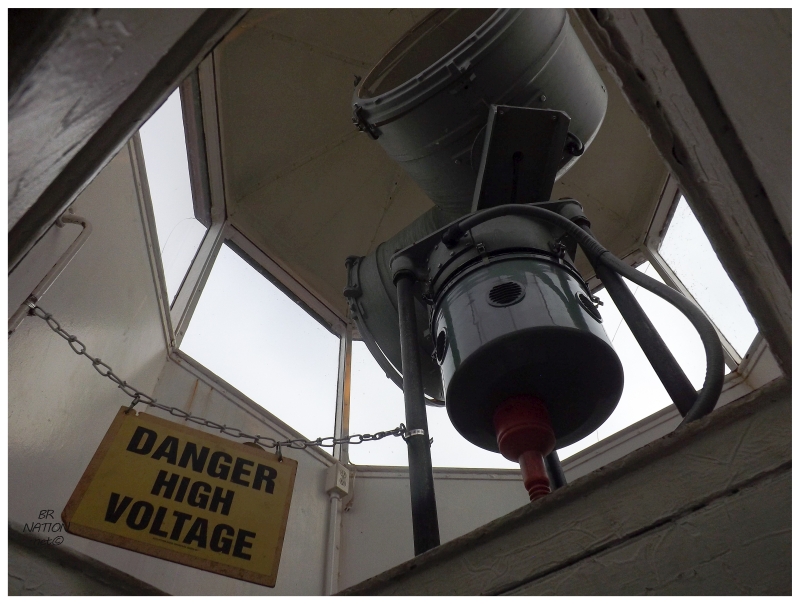
The next morning, after breaking down my tent, there was a busy breakfast place along the main strip and taking the one open seat, I soon discovered why it was so busy. I scarfed down my hearty breakfast as I thought about how I must be the only non-local here, while also being interrupted by the waitress every 5 minutes for coffee - which was quite fine, since I liked her accent where she could have been an extra in the movie Fargo. The Two Harbors Lighthouse grounds were now open and markedly more quiet than the grounds at Split Rock. Through a self-guided tour, I wandered through the pilothouse of a ship they have on the grounds, before finding myself up in the lighthouse peering out at the ore docks of Two Harbors. The last staircase led me up to their 1000 watt aerobeacon, while the original Fresnel lens was on display in Toledo at the National Museum of the Great Lakes (it was apparently returned in 2015, although I don't remember seeing it on my visit). |

And with that I had another Minnesota lighthouse and there were only four more to get down in Duluth. It was also now getting close to lunchtime, but I wanted to save my meals for the upcoming major city (even though I did have two great meals in Two Harbors). Two Harbors is a sizable town and it took me about a half hour to walk from the lighthouse to the end of it. Taking off my pack and resting it against my leg, car after car passed without anyone even hesitating at my extended thumb. Also, for all of my dreams of getting picked up by a car full of girls, I was 5/5 on the single men picking me up. (And as I stood here and made more eye contact, all of the families and women didn't even give me a passing thought, haha). I was having such bad luck that this was surpassing my original hitchhike outside the trading post in Grand Portage. In addition, there was a Culver's right across the street, a fast food chain I'd never visited but is found on my list of American chains that are probably decent. Their flashing sign tempted me every 30 seconds, continuing to flash notices of their new Reuben special. As much as I wanted to eat at the Coney Island in Duluth, this Reuben was really tempting me. Meanwhile, up ahead at the traffic light a police officer pulled up just as I put away my thumb. He thankfully turned right, but as he busted a u-turn, I suddenly realized I was dead to rights. Thankfully traffic continued to flow up and down this road with new drivers, because now everyone was seeing me standing in front of a police SUV with flashing lights alarming everyone from Duluth to Lutsen. As I sat there in front of the hood & had my name ran through the system, I'm sure there were dozens of people sitting in that Culver's, stuffing their maw with delicious Reubens and giggling at my misfortune. For what it's worth the officer was quite friendly, explaining that they have to run the name of anyone hitchhiking in Lake County. I was thankful I had looked up that it was legal to hitchhike in Minnesota; and then the cop wished me luck and told me to make sure I don't encroach on the road with my stance. |
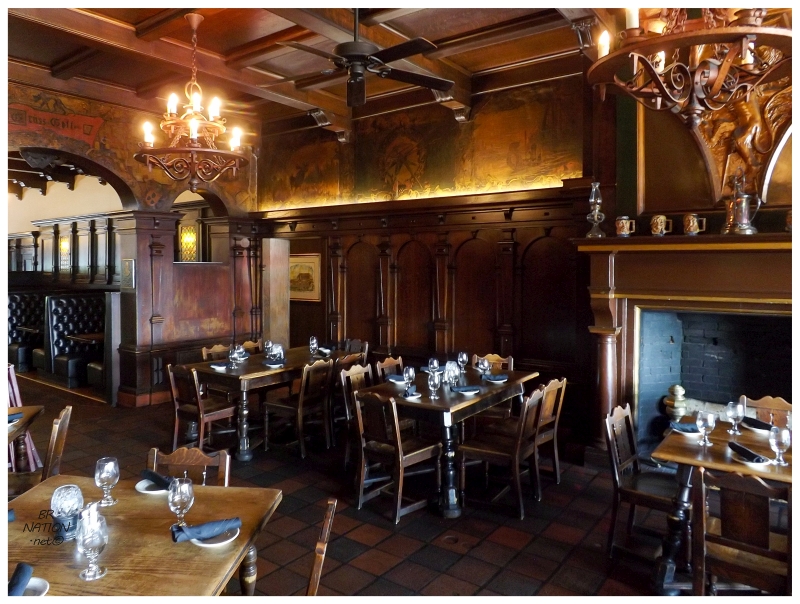
My luck would change 10 minutes later as a car finally stopped. Driver #6 definitely had the coolest car. What was this weird "T" logo on the dash? What were these weird metal flaps by my feet? To allow cool air in through the side panel? Are those fold-down, side-facing seats in the back? It turns out this was a 1977 Land Cruiser, easily the coolest vehicle I was picked up in, and maybe the coolest vehicle I'd ever been in period. (Shout out to Trakkah's car, my Dodge Ram Van & that Packard that used to sit outside.) In addition to the awesome wheels, the young man also offered me some water out of his cooler in the back. This guy was alright. In the end it wasn't that far to Duluth and in my driver's civic pride, he seemed a bit disappointed that I wasn't spending more than an afternoon in the Zenith City. He dropped me off at Pickwick's though, a local institution that he insisted wouldn't let me down - and he was right, hoo boy was he right, because my beef tenderloin penne with gorgonzola? Yeah, Pickwick's was alright with me. Not to mention the spectacular, ornate interior. I sat and wondered how much it cost to pick up this place in Munich and ship it to Duluth. |
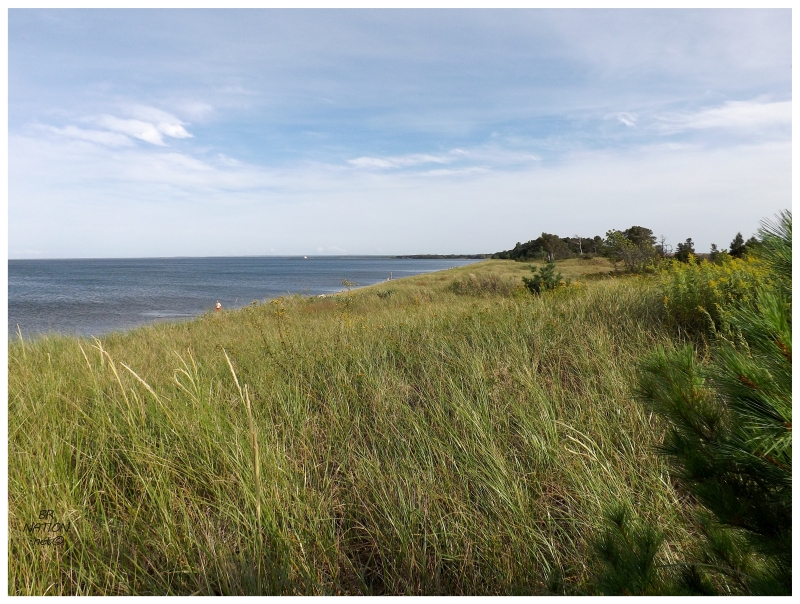
One of the things I wanted to check out in Duluth was Minnesota Point, which I could reach by an infrequent city bus, or I could yet again rent a bike. (As it turns out, I did the majority of my 2016 cycling in Minnesota, haha.) Down by the water there was a little shack renting bicycles, where a friendly girl stored my backpack, took interest in my trip and then let me know that you don't have to wear a helmet when riding a bicycle in Minnesota. Perfect! |

Duluth is separated from the city of Superior Wisconsin by St. Louis Bay, where the St. Louis River empties into Lake Superior. At the mouth of this bay extends a long sandy spit of land known as Minnesota Point, where a canal has been cut close to Duluth but the long piece of land extends for 10 kilometers (6 mi) before opening again down by the ore docks of Superior. Where Eagle Mountain was all up and down cycling, Minnesota Point was as flat as can be. It was a fine, windless day to roll through some working neighbourhoods and a nice park, before getting to the Point Park Trail and heading through the woods. I was also helped out by Heather back at Isle Royale, who'd told me about the poison ivy here, so I knew to do heel clickers whenever the vegetation got high enough to graze my ankles and calves. After all, I couldn't have a bunch of puss-oozing poison ivy rashes at the sunny, shorts weather, Minnesota Twins game tomorrow. |

Minnesota Point was a lovely area & I would recommend it to others visiting Duluth, but I was also out here because of a lighthouse. The Minnesota Point Lighthouse was started in 1855 before Minnesota even gained statehood, back when it was still the Minnesota Territory. 1855 was also the year that the Soo Locks were nearing completion & both Superior Wisconsin and Duluth Minnesota foresaw future shipping gains. This brick lighthouse was constructed to guide ships past the end of Minnesota Point, located about 3/10ths of a mile away. The reason this lighthouse sits in ruins today is because future governments approved construction of sturdy rock and concrete breakwalls on each side of the Superior Entry channel, located between the end of Minnesota Point and Wisconsin on the other side. Once this was reconstructed and reinforced, a lighthouse was built right on the breakwall, actually using bricks from the keepers house that used to stand here. With the construction of that lighthouse, the fresnel lens and the staircase was removed from Minnesota Point & it was allowed to fall into ruins following 1880. |
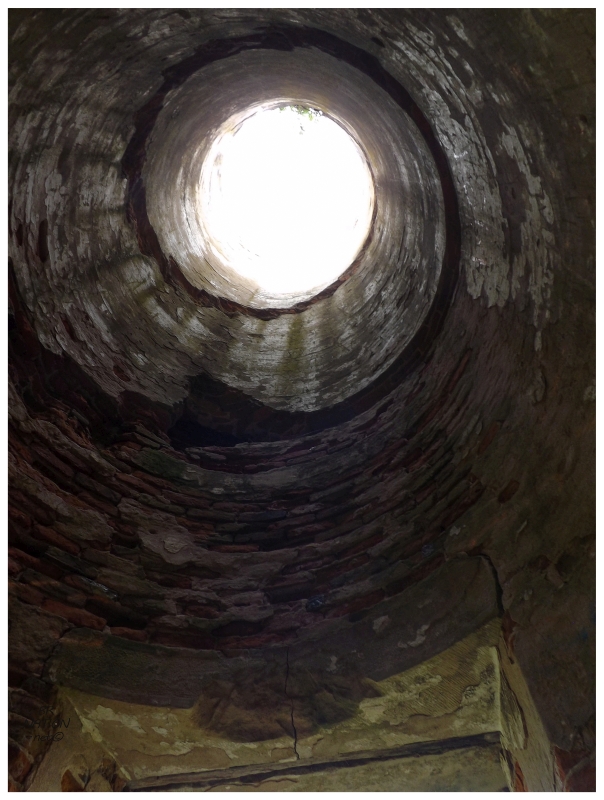
Obviously with who I am and my love of lighthouses, I get lots of articles like "13 amazing abandoned lighthouses you won't believe!" sent to me. Many of these articles are poorly-researched and hacky, and Minnesota Point is an easy lighthouse to find when some clickbait creator making $8/hour googles "abandoned lighthouses". For all of those articles over the years showing Minnesota Point, and for all of the years seeing this light on the Lighthouse Digest Doomsday Lists, it was an odd feeling to be finally standing here. All of this introspection and daydreaming was abruptly halted as I found myself inside the fence, trying to jump over the possible poison ivy and into the lighthouse. I had the brilliant idea of hanging onto the bottom of the fence and springing forward like Mario into the tube, but I wasn't amused to find out that the fence wasn't connected at the bottom - as I went to spring upwards, the fence simply mashed out and I flopped onto my face as I extended my legs. As it turns out, thankfully there wasn't any poison ivy right around the lighthouse where I landed. I sure would have looked cute at the Twins game with cheekbones oozing poison ivy juice. |
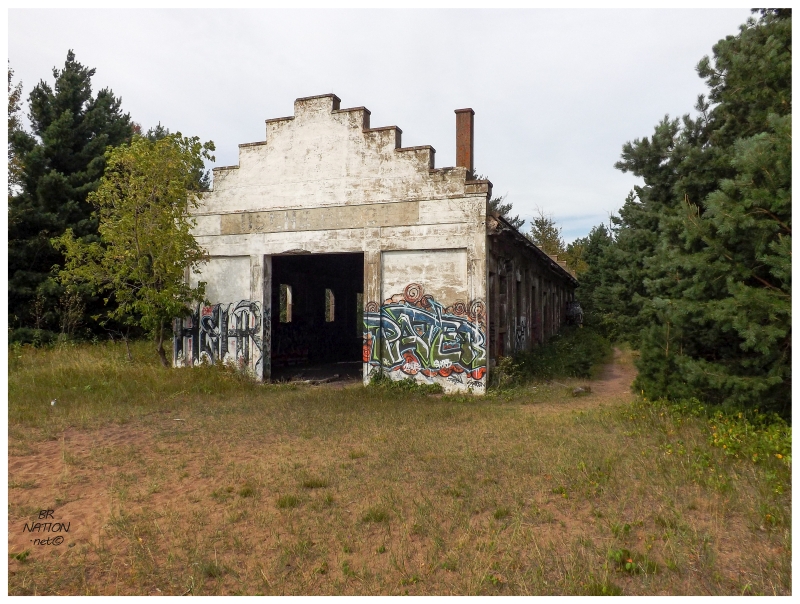
Another nearby ruin is that of the old Duluth Lighthouse Buoy Depot. Since the lighthouse depot in Detroit was so far away and the need for buoys in this area was ever increasing, this building was planned in 1903 and constructed in 1905. This allowed lighthouse personnel in the area to have a nearby building to store buoys in the winter and install them again come spring. |
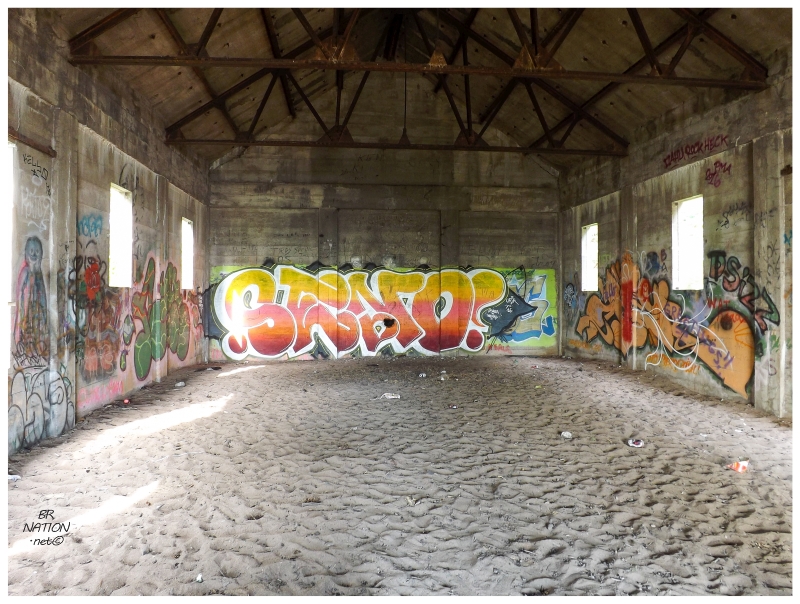
Since I know you're my friend to see the inside of abandoned buildings, here you go. |

I went out to the Superior Entry channel between the end of Minnesota Point and mainland Wisconsin, and away from a couple dudes fishing, I felt like I was all alone out there. Riding back, that experience was contrasted with hundreds of people around the Duluth Canal and Duluth's landmark Aerial Lift Bridge. Since the bridge was up and letting a boat through as I was trying to cross, I watched a few people playing football in the shadow of the great lift bridge, before I then followed the sidewalk down to both the Duluth Harbor South Breakwall Inner Lighthouse (foreground) and the Duluth Harbor South Breakwall Outer Lighthouse (in the back). Up to this point I'd only just saw my first skeletal tower-style lighthouse a handful of weeks earlier in Delaware - so I was really digging the views over this other fine example here in Duluth. |
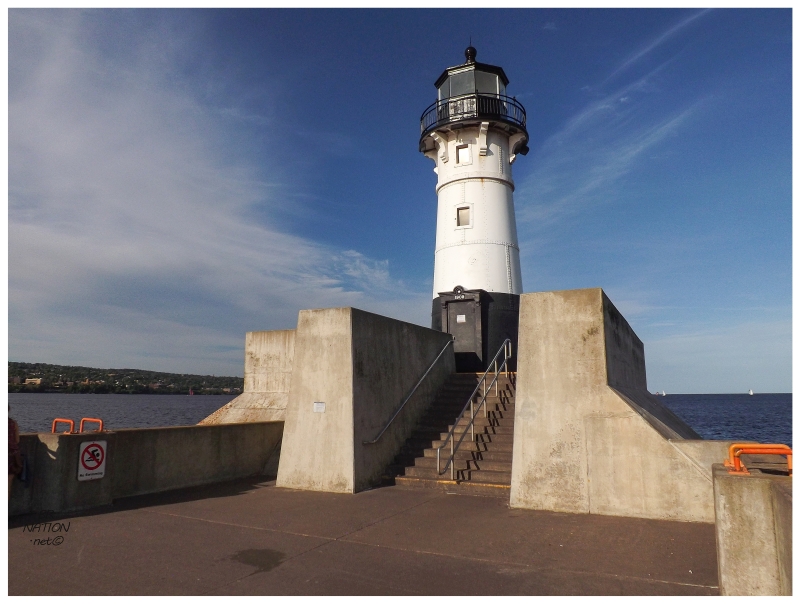
Crossing the bridge, I also biked up to Duluth Harbor North Pier Lighthouse. This one is a twin of the Peche Island Lighthouse that I visited in Marine City, Michigan. |

I continued past the bicycle rental place and into the City of Duluth, since I had only driven through here at night and it long remained on my list of cities that I wanted to explore. It looked awesome on that night as I cut through the hills, and it looked cool as I went from Pickwick's to the lakefront today. |

Duluth was a weird mixture of beautiful old buildings, modern infill and vacant lots. In a time where I feel a lot of cities seem similar, Duluth was really different, complimented by its hilly setting upon Lake Superior. I was really digging it. The above building is the magnificent Central High School. They were going to turn it into a residential building in 2014, but the sale fell through. It's still for sale as of 2018. |

These handsome rowhouses were uncharacteristic of the overall housing stock, as there were many more of your average midwest detached homes. Don't get me wrong though, there were rowhouses about, a unique feature for Duluth amongst Minnesotan cities. This particular building was once known as the Patterson Flats, designed by Oliver Traphagen, an architect who designed 130 buildings in Duluth and preferred my favourite architectural style, Richardson Romanesque. The Patterson Flats were built in 1887 and contained 6 individual units with a later add-on 7th, each apartment one of the finest in all of downtown. Living downtown in Duluth fell out of vogue by the 1920s, and aided by a questionable wooden restaurant addition to the front of the building, the professionals started to move out and the units started to get subdivided. By 1960 there were 40 units, and by the 2000s there were 50 separate apartments. In addition, the restaurant was turned into a tavern after prohibition and then became what sounds like the seediest, roughest bar in Duluth, with regular police visits and hipsters saying it was too much of a dive bar. Unfortunately the once-grand building suffered an apartment fire on November 15th, 2010. It was then seized for overdue taxes in 2011 and has sat in litigation ever since. The owner insists that he is interested in restoring the historic building, but the county wants to make sure the building can still be saved and that his intentions are good. |

I could have really used another couple hours to wander around Duluth, but I had to get this bike back and catch the last bus of the day. Biking around did nothing but make me want to spend more time here. There were so many funky old signs, weird 1960s buildings, seedy-looking bars and weird crevasses and alleyways. I wanted to explore and photograph it all. In just a couple of hours, Duluth had burst into my top 10 list of cities. |

I saw one last cool thing just as I was about to return my bike. Kids were swimming out from the shore towards this old building & I could see them exploring inside...and then after a minute or so, one emerged and jumped off the top! Apparently this is a common summer happening in Duluth? Jumping off the old sand and gravel hopper (storage building) into Lake Superior? Cool! And oh yeah, people also walk out on frozen Lake Superior to explore it in the winter. Duluth for the win. |

As I said, I had a bus to catch & that was the day's last bus across the Bong Bridge and into Superior Wisconsin. Duluth is a surprisingly expensive place for hotels, while Superior had one of those old, oversized hotels with too many rooms and cheap room rates to match. For $62, I quickly had my corner room at the Androy Hotel, high up, looking over a new golden city. |
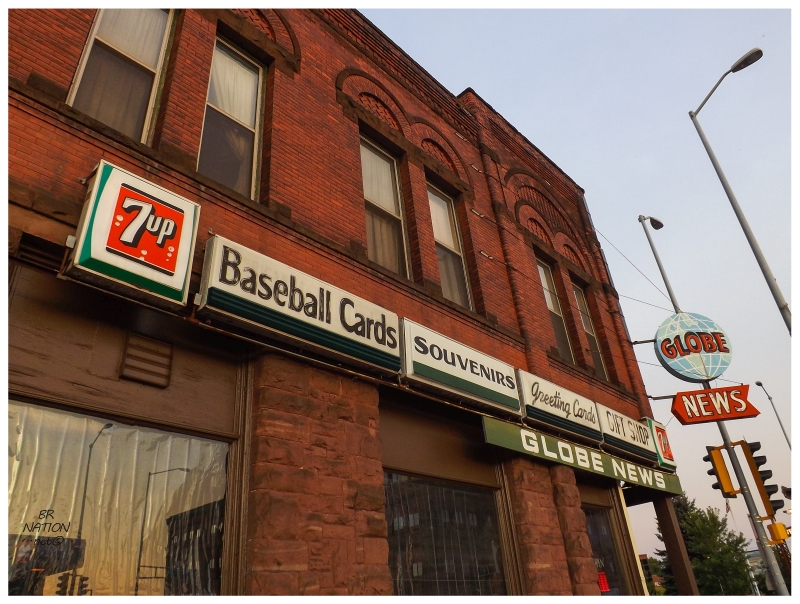
In addition to cheap and memorable accommodations, I also liked Superior itself. It felt like many of those other older towns along Lake Superior, while I'm sure the quiet and calm evening weren't hurting my opinion either. I went into a few bars looking for the Orioles game and some food, before eventually finding a decent burger for $4.75 at Who's Bar, where I shot the shit with the bartender before devouring my burger after a long day. With an early bus to catch the next morning, I didn't stay out very late. The one complaint I read about the Androy Hotel was that the bar across the street attracted hoodrats and fighting, and sure enough, I stirred a bit as I heard yelling and commotion around 2 a.m., just like clockwork. |

My bus down to Minneapolis left at 7am, so after an awkward cab ride where the guy lost his mind on the phone while weaving around Superior & Duluth, I found myself on a mostly empty bus rolling down the interstate towards the Twin Cities. Dropping off my stuff at the fancy hotel I splurged on a bit, I was psyched that the pre-baseball meal came in a place that had a neon Timberwolves sign. |

For some reason - I guess I was getting tired by now - I was grumpy and miserable at the game after this was one of the things I was looking forward to the most. I love Minneapolis & Target Field, but I was happy to be back in my hotel and away from the hustle and bustle in the end. After a good night's sleep I was ready for the last few days of this trip though. I had a rental car and plans to head towards Michigan. |